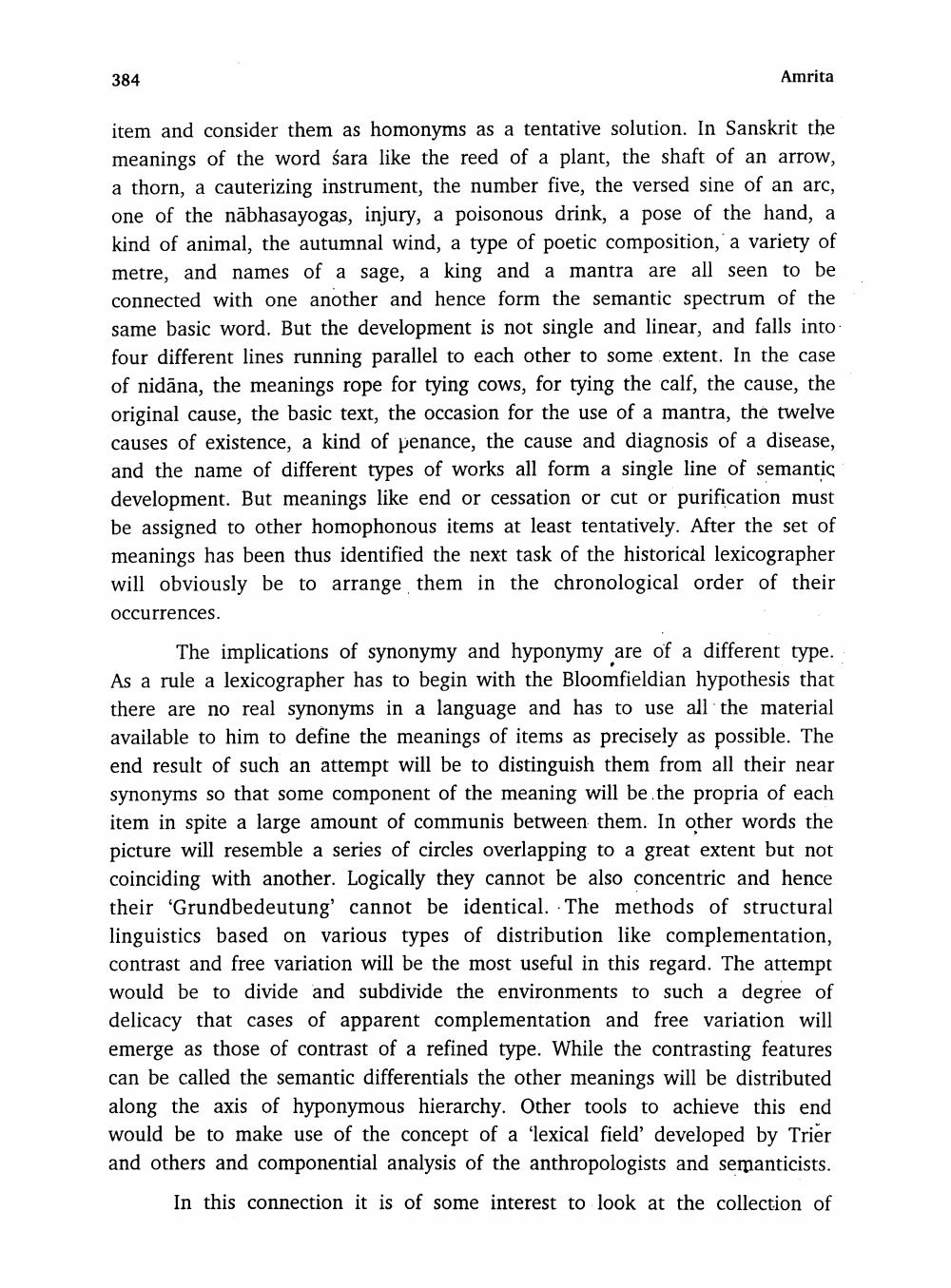________________
384
Amrita
item and consider them as homonyms as a tentative solution. In Sanskrit the meanings of the word śara like the reed of a plant, the shaft of an arrow, a thorn, a cauterizing instrument, the number five, the versed sine of an arc, one of the nābhasayogas, injury, a poisonous drink, a pose of the hand, a kind of animal, the autumnal wind, a type of poetic composition, a variety of metre, and names of a sage, a king and a mantra are all seen to be connected with one another and hence form the semantic spectrum of the same basic word. But the development is not single and linear, and falls into four different lines running parallel to each other to some extent. In the case of nidāna, the meanings rope for tying cows, for tying the calf, the cause, the original cause, the basic text, the occasion for the use of a mantra, the twelve causes of existence, a kind of penance, the cause and diagnosis of a disease, and the name of different types of works all form a single line of semantic development. But meanings like end or cessation or cut or purification must be assigned to other homophonous items at least tentatively. After the set of meanings has been thus identified the next task of the historical lexicographer will obviously be to arrange them in the chronological order of their occurrences.
The implications of synonymy and hyponymy are of a different type. As a rule a lexicographer has to begin with the Bloomfieldian hypothesis that there are no real synonyms in a language and has to use all the material available to him to define the meanings of items as precisely as possible. The end result of such an attempt will be to distinguish them from all their near synonyms so that some component of the meaning will be the propria of each item in spite a large amount of communis between them. In other words the picture will resemble a series of circles overlapping to a great extent but not coinciding with another. Logically they cannot be also concentric and hence their 'Grundbedeutung' cannot be identical. The methods of structural linguistics based on various types of distribution like complementation, contrast and free variation will be the most useful in this regard. The attempt would be to divide and subdivide the environments to such a degree of delicacy that cases of apparent complementation and free variation will emerge as those of contrast of a refined type. While the contrasting features can be called the semantic differentials the other meanings will be distributed along the axis of hyponymous hierarchy. Other tools to achieve this end would be to make use of the concept of a “lexical field developed by Trier and others and componential analysis of the anthropologists and semanticists.
In this connection it is of some interest to look at the collection of




